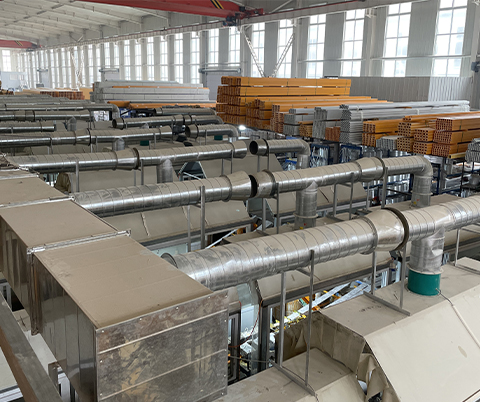loading...
- No. 9, Xingyuan South Street, Dongwaihuan Road, Zaoqiang County, Hengshui, Hebei, China
- admin@zjcomposites.com
- +86 15097380338
- Welcome to visit our website!
frp guardrail
Understanding FRP Guardrails Safety, Applications, and Advantages
Fiber Reinforced Polymer (FRP) guardrails have become a popular solution in various industries, particularly in transportation and civil engineering, due to their unique properties and advantages. This article explores what FRP guardrails are, their applications, and the benefits they bring to safety and infrastructure.
What are FRP Guardrails?
FRP guardrails are safety barriers made from fiber reinforced polymers, a composite material that combines a polymer matrix with reinforcing fibers such as glass or carbon. These materials impart enhanced strength, durability, and corrosion resistance compared to traditional metal or concrete barriers. The construction of FRP guardrails involves the careful arrangement of fibers within a resin, resulting in a lightweight yet robust structural element capable of withstanding significant impacts.
Applications of FRP Guardrails
1. Road Safety One of the most common applications of FRP guardrails is in road safety. They are installed along highways and roads to prevent vehicles from veering off the roadway in the event of an accident. Their lightweight nature makes them easier to install and maintain compared to metal guardrails.
2. Bridges and Overpasses FRP guardrails are frequently used on bridges and overpasses due to their resistance to corrosion from exposure to weather and road salts. This characteristic extends the lifespan of the infrastructure and reduces maintenance costs.
3. Marine Environments Given their superior corrosion resistance, FRP guardrails are ideal for marine environments where traditional materials would succumb to rust and degradation. They are used in ports, docks, and waterfront properties to provide safety without compromising aesthetics.
4. Industrial Facilities In manufacturing and industrial plants, FRP guardrails are employed to delineate work areas and ensure the safety of personnel. Their strength allows them to absorb impacts from machinery or equipment, safeguarding workers from accidents.
frp guardrail

Advantages of FRP Guardrails
1. Corrosion Resistance One of the standout advantages of FRP guardrails is their inherent resistance to corrosion. Unlike metal, which can rust and deteriorate over time, FRP materials are impervious to chemicals and environmental stresses, making them ideal for long-lasting applications.
2. Lightweight and Easy Installation FRP guardrails are significantly lighter than traditional alternatives, which simplifies transportation and installation. This can lead to lower labor costs and quicker project completion times.
3. High Strength-to-Weight Ratio Despite their lightweight nature, FRP guardrails boast a high strength-to-weight ratio. This means they can withstand substantial forces, increasing safety without the need for bulky supports.
4. Aesthetic Flexibility FRP materials can be manufactured in various colors and finishes, allowing for greater aesthetic flexibility in design. This is particularly important in urban environments where visual appeal is a consideration.
5. Low Maintenance The durability and corrosion resistance of FRP guardrails result in reduced maintenance requirements. Users can save on long-term costs associated with repairs or replacements that are more common with traditional materials.
Conclusion
FRP guardrails represent a significant advancement in the field of safety barriers, providing a blend of strength, durability, and aesthetic flexibility. Their applications span various sectors, from road safety to industrial environments, making them a versatile choice in today's infrastructure projects. As the demand for safer, more efficient structures continues to grow, FRP technologies will likely play an increasingly central role in enhancing public safety and protecting critical infrastructure. Therefore, the adoption of FRP guardrails not only reflects a commitment to safety but also highlights the importance of innovation in engineering solutions.
-
Transform Your Spaces with FRP Grating SolutionsNewsNov.04,2024
-
The Versatility and Strength of FRP RodsNewsNov.04,2024
-
The Excellence of Fiberglass Water TanksNewsNov.04,2024
-
The Benefits of FRP Grating for Your ProjectsNewsNov.04,2024
-
Elevate Your Efficiency with FRP Pressure VesselsNewsNov.04,2024
-
Welcome to the World of FRP Pressure VesselsNewsOct.12,2024
-
Unveiling the Future of Filtration: Why FRP Filter Vessels are a Game ChangerNewsOct.12,2024
